Image files are of immense importance to photographers. A damaged ISO file can cause installation failures or lead to missing files. The issue can also manifest as mounting errors or repeated extraction issues. Such corruption often leads to wasted time and potential data loss. If you have lost or damaged ISO files, it could mean an inability to boot or create media properly.
Thus, this situation calls for you to recover and repair iso image file. Understanding the causes and symptoms helps you avoid further damage and recover your data. This guide explains the best ways to recover and repair an ISO image file effectively.
Try Recoverit to Perform ISO File Recovery

In this article
Part 1. 5 Causes of ISO File Corruption You Need to Know!
Before trying out any file recovery or repairing techniques, you must understand the causes of image corruption. The following section explains the most common causes of ISO file corruption:
- Interrupted Downloads: An unstable connection can break file segments, leaving the ISO incomplete and unusable after download. Even small interruptions during transfer may corrupt essential boot or installation data.
- Faulty Storage Devices: Damaged hard drives or USBs can introduce bad sectors that spoil newly saved ISO files. Continuous use of failing devices increases the risk of irreversible ISO corruption, requiring iso file repair or recovery.
- Improper File Transfers: Copying ISO files between devices without completing the process can leave them partially written. Forced ejections or sudden disconnections often damage the file structure instantly.
- Malware or Virus Infection: Malicious software can modify or delete critical ISO components, making the file impossible to mount. These infections usually tamper with internal data tables essential for correct reading.
- Power Outages During Creation: If power fails while creating or writing an ISO, the resulting file remains incomplete or broken. Any disruption interrupts the data assembly process required for a valid image.
Part 2. Preparing for ISO Repair | 4 Solutions that Actually Help
Now that we know about the most common causes of ISO file damage, let's explore the top repair techniques. The following section narrows down the effective solutions for file repair:
Method 1. Use Dedicated ISO Repair Software - Repairit
When looking for an AI-powered photo repair tool, Repairit is a decent choice. With a 95% success rate, this tool makes sure that your files are effectively fixed. From overexposed visuals to stained images, you can cater to many types of iso file repair. If your images were shot through a bad-quality camera, use Repairit to remove the pixelation and discoloration.
To enhance your productivity, Repairit offers a batch repair tool and processes bulk images. Before you download the repaired file, you can use the preview feature to extract the thumbnail. If the file was not repaired using the conventional repair tool, use the Advanced Repair mode for extensive fixing. Once your ISO images are fixed, they are saved in the dedicated cloud storage.
A Step-by-Step Guide to Repairing a Damaged ISO File Using Repairit
After exploring the key attributes of Repairit, let’s see how this tool can be used. The following section explains how you can fix a damaged image using this tool:
1. Import Images to the Photo Repair Tool
To start the process, enter the “More Types Repair” tab in the left panel and select the “Photo Repair” option from the right. Now, import the damaged ISO images to start the repair.
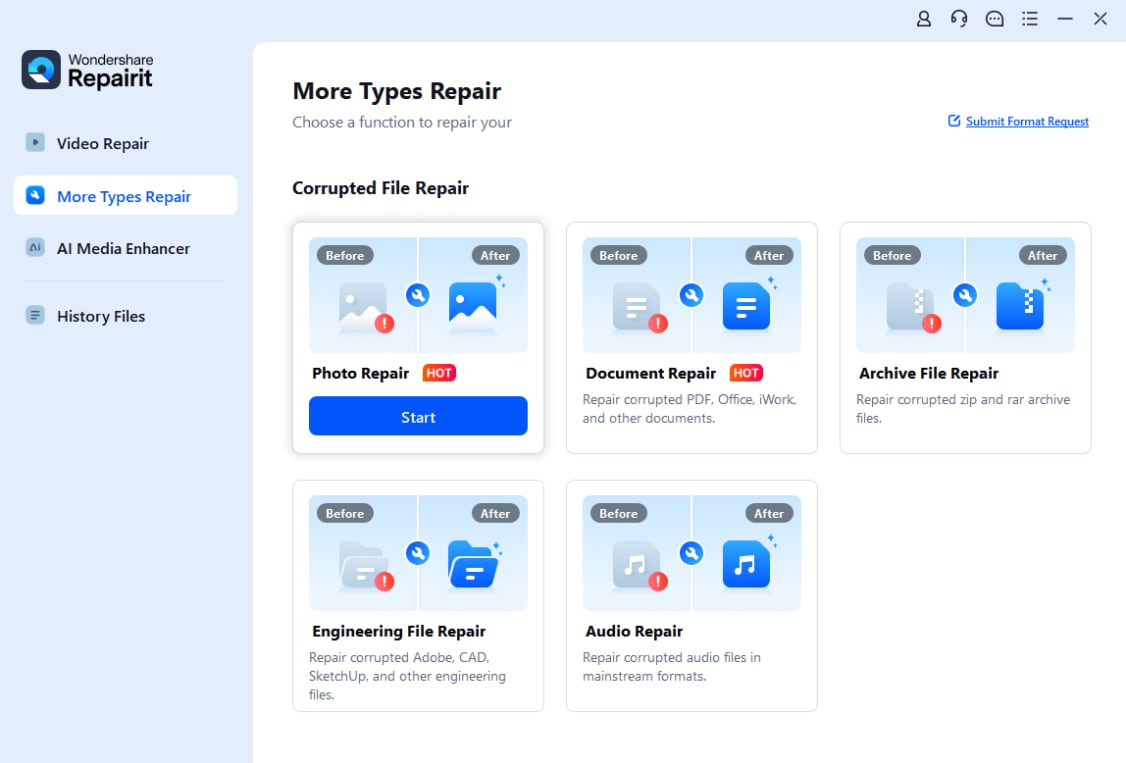
2. Repair the Imported ISO Files
Once the files are imported, select the “Repair” button at the bottom right and start repairing the image. You can also enable the “Advanced Repair Mode” for extensively damaged photos.
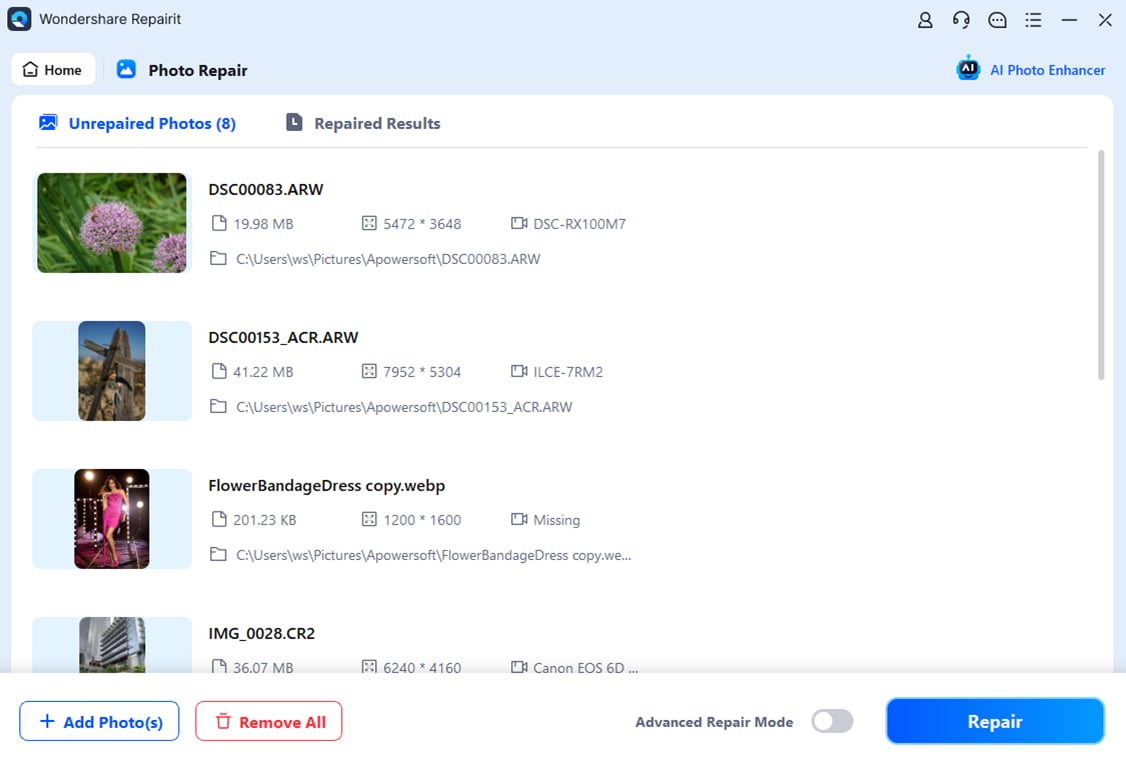
3. Save or Preview Images
As your photos are repaired, select the “Save” button from the following dialogue box to download them. You can also click “Preview” to look at the images before you save them.
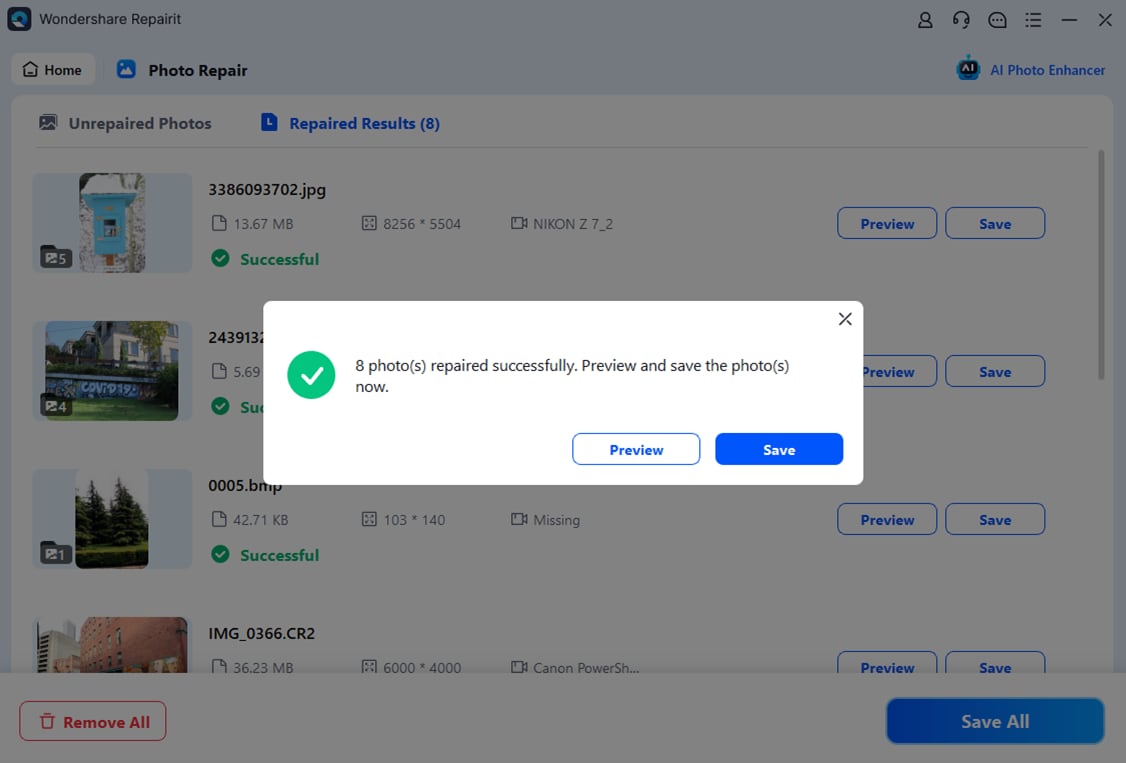
Method 2. Repair ISO Files With the DISM Command
DISM helps detect integrity issues inside system-related ISO images by verifying essential components. It matters because it uses built-in Windows repair capabilities, reducing risks associated with third-party tools or unreliable downloads. Follow the guide below and learn how to fix iso file using the DISM command:
- To start the process, enter the “Win + R” hotkeys and type “CMD” in the following window.
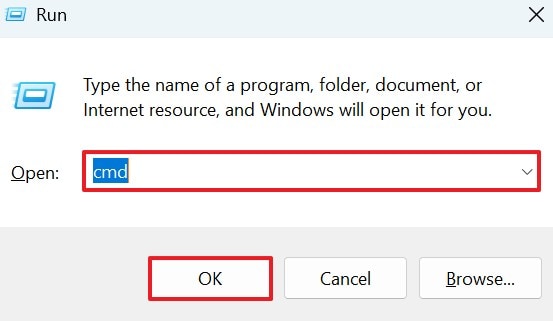
- From the following window, enter the “DISM /Online /Cleanup-Image /RestoreHealth” command and press the Enter key to start the repair.
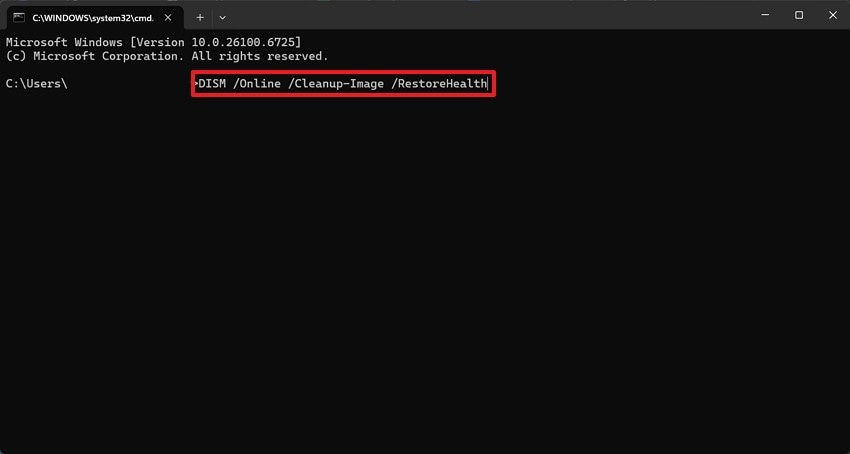
Method 3. Repair Corrupted ISO Files With System File Checker
SFC checks for damaged system dependencies required to process or mount ISO files correctly. This method is important because it ensures your operating system isn’t contributing to ISO failures or repeated corruption. The steps below outline the guide to repair iso image file with SFC:
Instructions. After accessing CMD on your device, enter the “sfc /scannow” command and press the “Enter” key to resolve the problem.
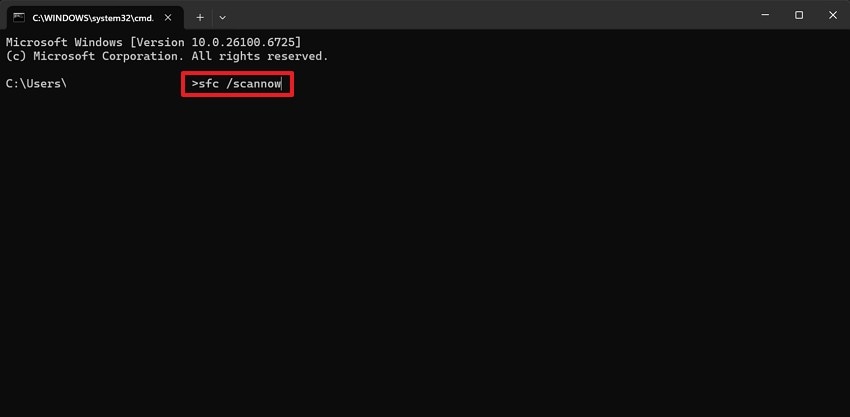
Method 4. Redownload an ISO File
Redownloading ensures you receive a complete, properly signed ISO without structural damage or missing sectors. This iso file repair solution is important because fresh files eliminate hidden corruption that repair tools cannot always detect or fully fix.
Part 3. Recovery Hack: Restore Deleted or Broken ISO Files Using Recoverit
Deleted ISO files can often be recovered if the storage sectors haven't been overwritten. Recovery tools are effective because they scan deep storage layers to restore lost or corrupted ISO data. The following section explores the top methods of getting this job done:
1. Use an ISO Data Recovery Software - Recoverit
You can use a third-party iso file recovery tool to regain access to your missing ISO image files. Recoverit is a reliable photo retrieval tool that caters to more than 1,000 file formats other than images. It offers a 99.5% success rate to give you back access to your deleted images. Recoverit supports Mac and Windows devices to cater to a broad range of users.
This tool enables a batch recovery feature to retrieve multiple images in a single task. For enhanced compatibility, it offers support to more than 1 million storage devices. Before you download the images, you can preview them using the dedicated file preview utility. At the end of the process, the recovered files have a preserved quality.
Key Features
- File Scan Options: Users can apply the automated file scan feature and also apply a custom search filter for precision.
- Quick and Deep Scan: When looking for a conventional file scan, use the Quick scan. Users wanting a deeper dive into the device benefit from the Deep Scan.
- Lost File Scenario: Recoverit supports more than 10,000 cases of missing files, ensuring versatility.
A Complete Guide to Retrieving Lost ISO Files Using Recoverit
After exploring the features of Recoverit, you must use it for effective ISO file recovery. Go through the following guide to explore how this tool can excel in iso file recovery:
- Select the Location of a Missing ISO Image File
To begin with, open Recoverit and select the location of your missing file from the left panel.

- Choose the Missing ISO Files and Recover
When the missing files appear on the next interface, select them and click “Recover” to retrieve them.

- Preview the Recovered File
As the ISO image files are recovered, preview them and hit the “Recover” button to save them.

2. Recover From Recycle Bin
Retrieving ISO files from the Recycle Bin is often the fastest and simplest recovery approach available. This method works well when files have been recently deleted and remain intact in temporary storage. The steps below give a guide to iso data recovery from the Recycle Bin:
Instructions. First, locate the missing files in the Recycle Bin and right-click on them to “Restore” them using the pop-up menu.
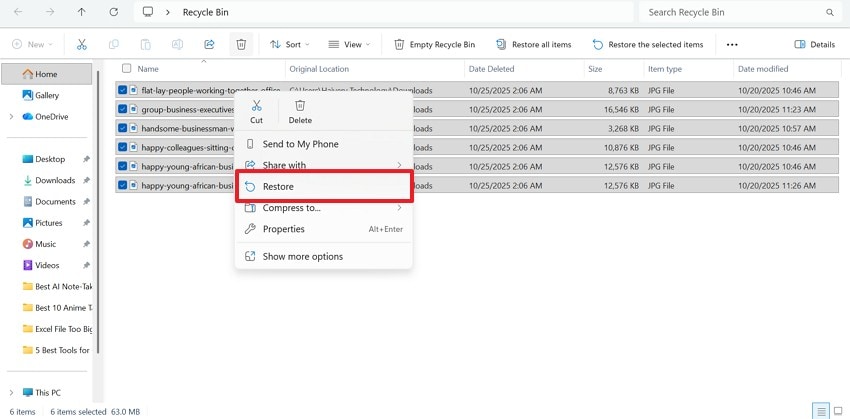
3. Recover ISO Files From Backup
Backups provide clean versions of ISO files that bypass corruption and deletion issues. This method ensures that you restore reliable, error-free copies created before any data loss occurred. If you want to learn how to perform iso file recovery from a backup, follow the guide below:
- First, connect your SD card or storage drive to the computer and go to the folder where the photos were originally stored. Once the file is located, right-click on it and select the “Properties” option.
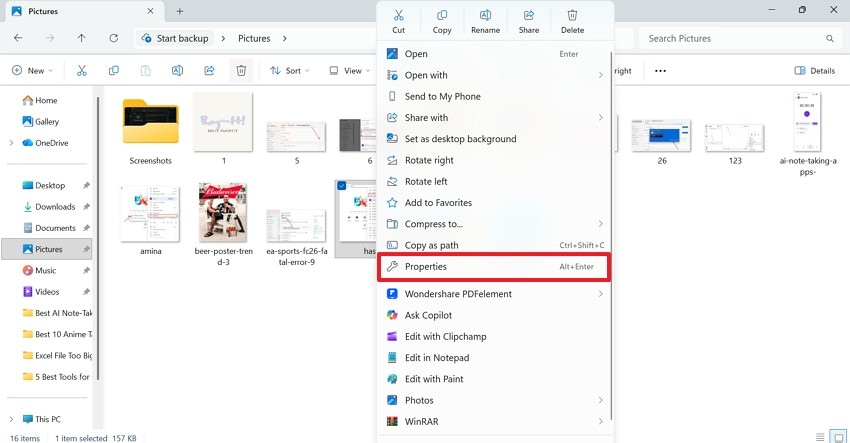
- In the “Properties” window, enter the “Previous Versions" section and select the time and date for the version you want to restore. Lastly, click the “Restore” button to regain access to that version of the image.
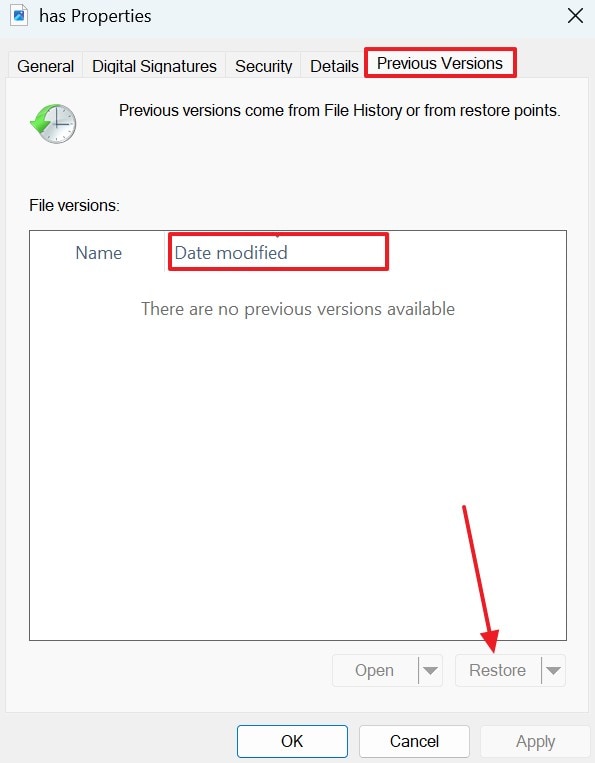
4. Recover ISO Files From File History
Windows File History allows users to recover earlier versions of ISO files without external tools. It offers a convenient, built-in safety net for restoring accidentally deleted or overwritten ISO images. Follow the steps below and learn how to perform iso data recovery from File History:
- First, search for “Restore your files with File History” in the search bar and open the relevant feature.
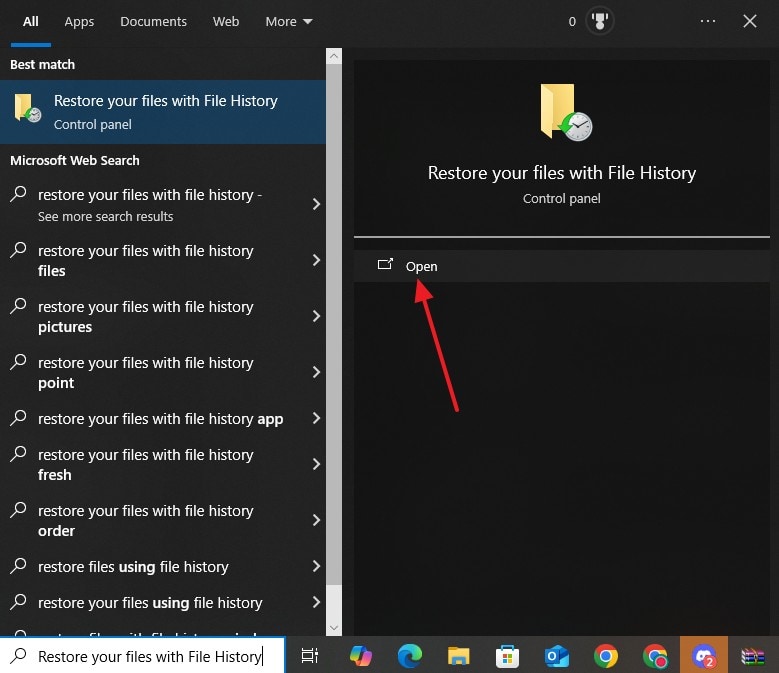
- Using the next interface, locate the file that you need to restore and select the “Restore to the Original Location” option to save the file.
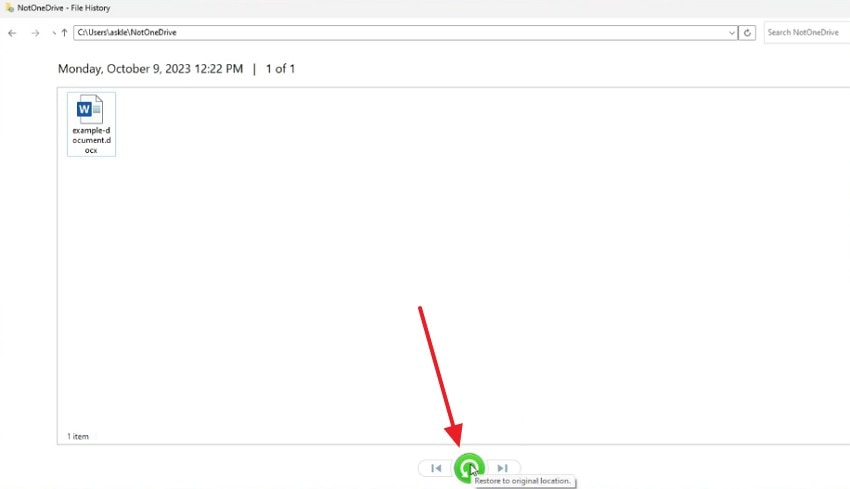
Part 4. 5 Pro Tips for ISO File Management and Prevention
Before you save ISO files, there are various file management and prevention factors to consider. The following section explores the tips to keep your images safe and prevent iso file recovery:
- Always Verify Download Sources: Always download ISO files from trusted, official websites to reduce hidden corruption risks. Verified sources also ensure your ISO contains complete data without dangerous alterations.
- Maintain Multiple Backups Regularly: Keep at least two backups of important ISO files to prevent accidental loss or damage. Storing copies on separate drives greatly increases long-term reliability and quick recoverability.
- Use Reliable Storage Devices Only: High-quality storage devices significantly reduce read-write errors that can corrupt ISO files unexpectedly. Avoid failing or low-grade drives because they often create bad sectors and unstable transfers.
- Avoid Interrupting File Transfers: Never disconnect your device or shut down your system while an ISO transfer is active. Interrupted transfers frequently create incomplete ISO segments that cannot mount or install properly.
- Scan Devices for Malware Frequently: Malware can silently alter ISO data and damage essential installation files without immediate signs. Running scheduled scans ensures your drives stay clean and your ISO files remain intact.
Conclusion
This article explored various methods to recover and repair iso image file, including Repairit. This tool is a robust image file fixer with multiple format support. When it comes to recovering your ISO image files, use Recoverit for efficient recovery from any folder on your device.
FAQ
1. What causes an ISO file to become corrupted?
ISO corruption usually occurs due to incomplete downloads, storage errors, or sudden power loss. Malware infections and bad sectors can also damage the file structure.2. Which tool is best for repairing a corrupted ISO file?
Dedicated repair software like Repairit offers specialized algorithms designed to rebuild damaged ISO structures. It works better than other file repair tools because it supports various other image formats as well.3. How can I regain access to an accidentally deleted ISO file?
If you accidentally deleted an ISO file, you could recover it from the Recycle Bin. When the files are absent in this folder, use Recoverit for image file retrievals. This platform supports over 1 million storage devices for efficient iso file recovery.4. Is there a method to retrieve multiple image files from a PC?
To recover multiple ISO files from your PC, use Recoverit. This tool offers a handy batch recovery tool to restore multiple images in a single go.
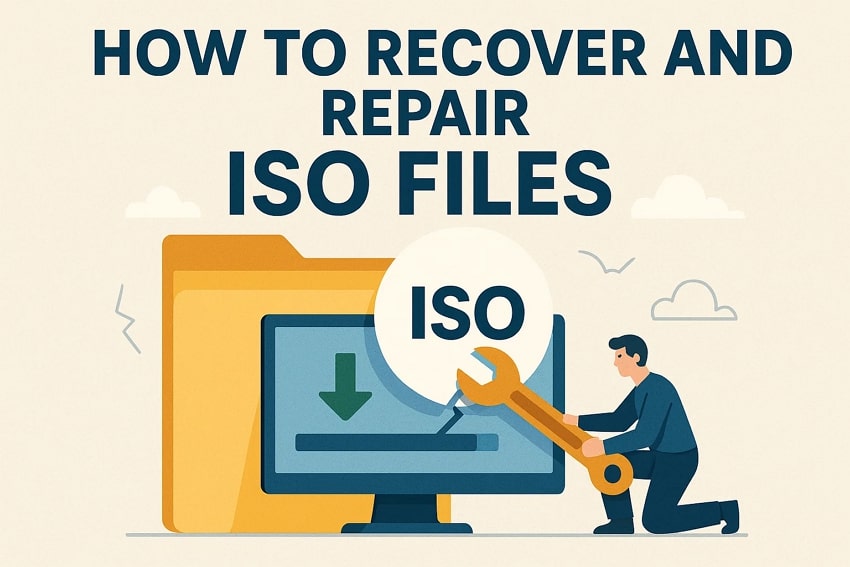



 ChatGPT
ChatGPT
 Perplexity
Perplexity
 Google AI Mode
Google AI Mode
 Grok
Grok























